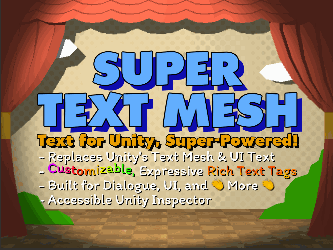I have a frame-by-frame animated quad that I'm using as a click-to-continue icon, but it isn't slicing and tiling correctly. Here is the quad in question, and this is what each frame looks like when displayed in-game.
These results aren't consistent; for example, changing the scaling in Game view can make the extra line of pixels appear or disappear. So I guess it has something to do with how the texture is being downscaled (or upscaled). A few things I've tried:
- Slicing the sprite myself in the import settings (I think Super Text Mesh ignores this?)
- Setting filter mode to Point in both STM and sprite import settings
- Turning off mip maps
- Resizing sprites so that there are a few columns of transparent pixels between each arrow
Is there a way to just slice my own sprites for use in an animated quad?


